March Plant of the Month: Narcissus
Daffodils are such a cheerful sign of spring, and bring hope of brighter days ahead. Learn all about them here.
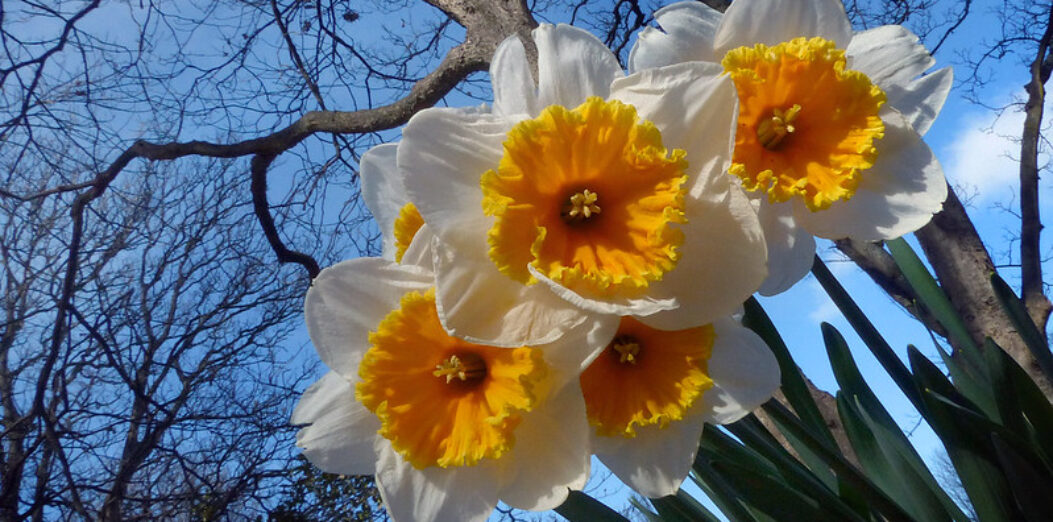
Narcissus, commonly known as Daffodils, are spring bulbs that brighten our gardens and herald the arrival of longer, brighter days ahead. One of the most reliable spring-flowering bulbs, blooming year after year with little attention. They grow well in containers, borders and grass, with a wide range of flower shapes, forms and sizes to choose from, to brighten up your garden throughout spring.
Appearance
- The classic bright yellow trumpets of Daffodils held above strappy green leaves are hard to miss and really do brighten up the garden this time of year.
- However, there are so many varieties now available that range in height from about 5cm up to 45cm and come in a variety of colours from pure white, primrose yellow, or even orange trumpets and white petals.
- There are also double or single head, single or multi petaled varieties available, so there is a daffodil for any style of garden.
Right: Narcissus ‘Tete-a-tete’
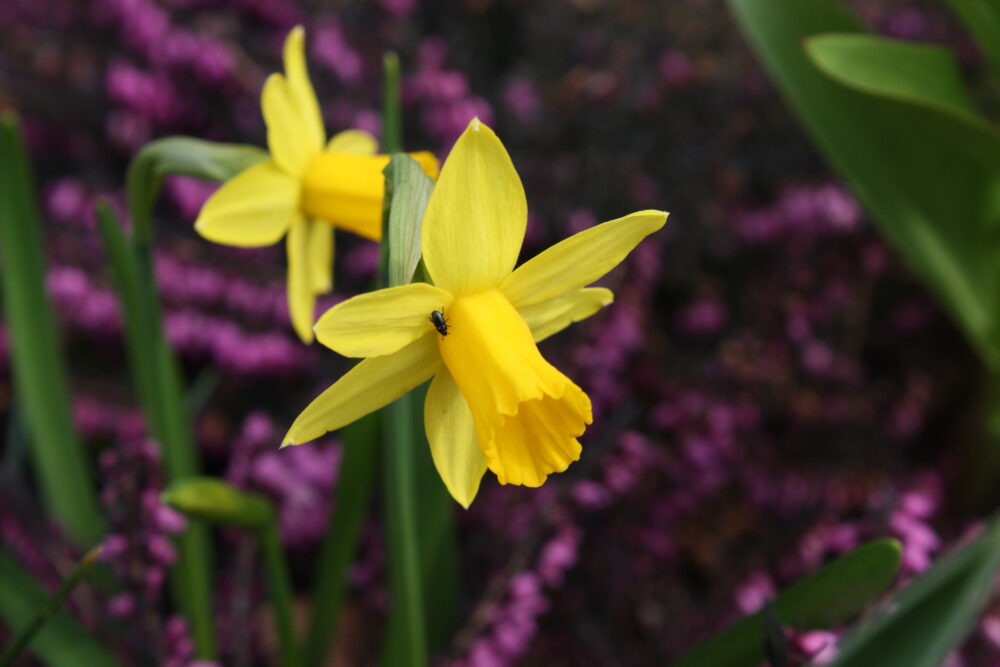
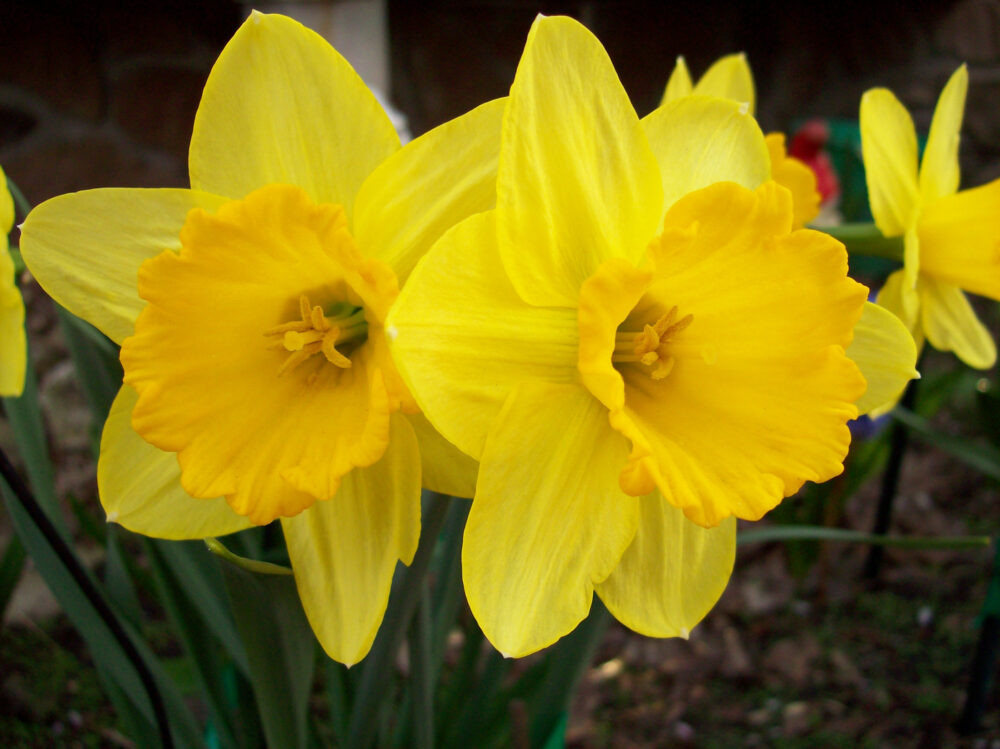
Where to Plant Them
- Daffodils do best in full sun but will tolerate light shade.
- Plant them in a moist but free-draining soil.
- Daffodils are best planted on mass rather than individually for the best impact. Plant them in your border to add early colour before your summer flowers.
- Shorter varieties are ideal for front of border or naturalised in short grass, while taller varieties are great amongst other plants.
- When planting in grass, the easiest way to get the natural look is to throw the bulbs and plant them where they land.
- Daffodils grow well in pots, either on their own or mixed with other springs bulbs such as Hyacinths and Tulips, why not give a spring bulb ‘lasagne’ in a pot a go by layering the bulbs with daffodils at the bottom?
Left: Narcissus ‘Dutch Master’
Pests and Diseases
- Daffodils can suffer from ‘blindness’. This is where they produce a healthy crop of foliage but no flowers.
- There are several reasons why this happens: poor soil, overcrowding or shade.
- If they are overcrowded simply dig them up in autumn and divide and replant. If it is too shady, transplant to a sunnier spot. If you think the soil is poor add well-rotted manure or compost.
- Just be patient as it can take several years for the bulbs to flower again.
Right: Narcissus ‘Thalia’
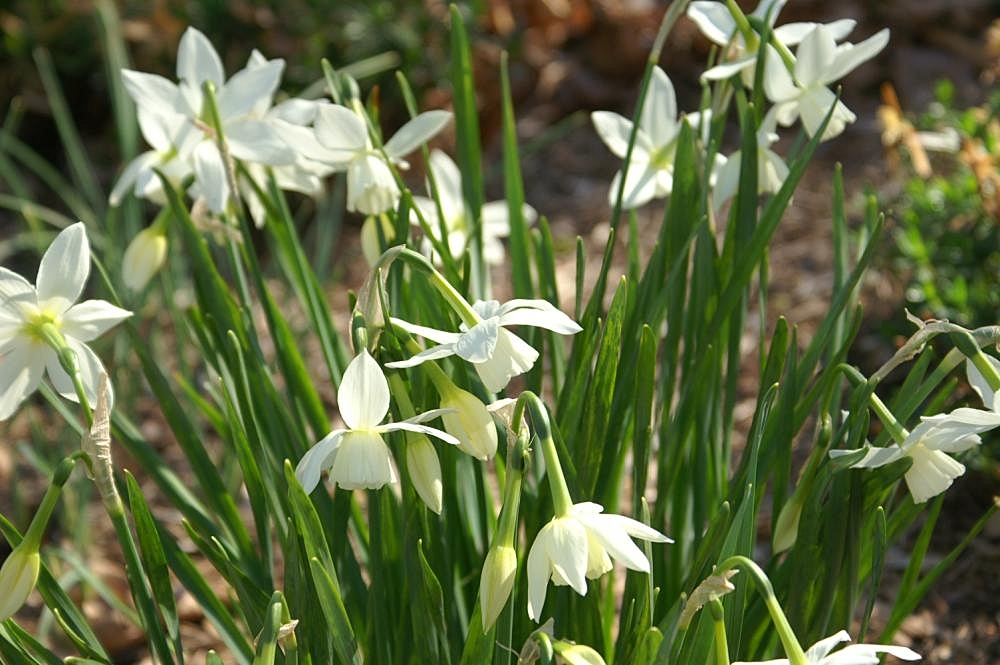
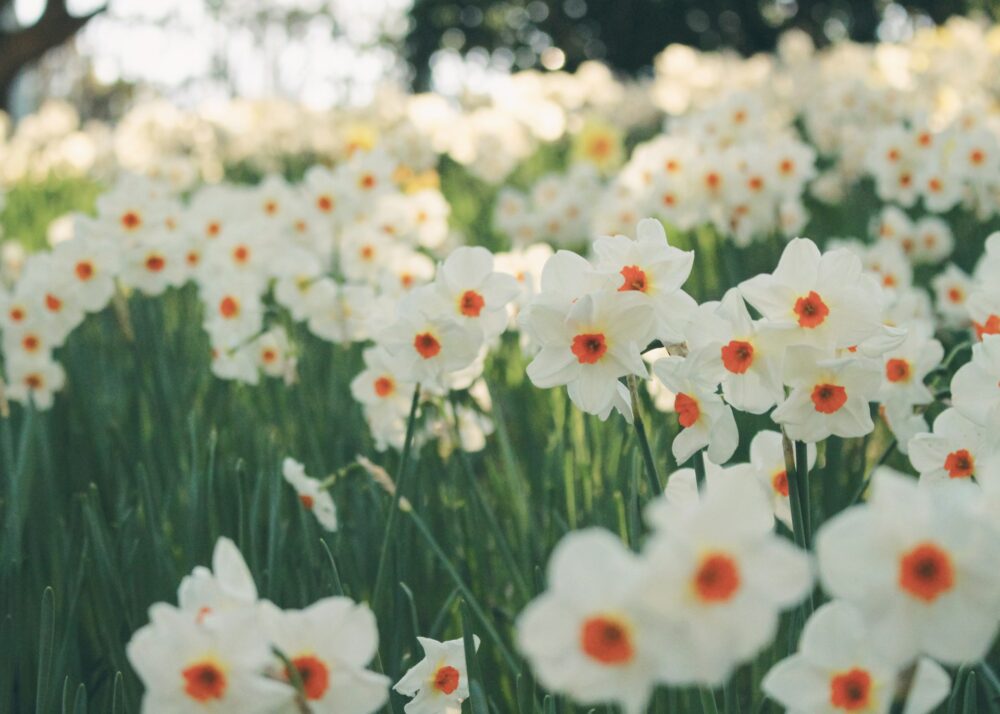
Plant Care
- Care: Plant Daffodils in Autumn, from September to November, to give them time to develop roots before the cold temperatures.
- You can plant later in the year in December and January, however the bulbs may take longer to establish and flower but will catch up in a coming years.
- Deadhead spent flowers and allow foliage to die back to ensure nutrients to return to the bulb.
- Divide established clumps every few years.
- Daffodils make wonderful cut flowers and removing a few flowers from each plant will not affect the plant.
Varieties to Consider
- Narcissus ‘Tete-a-tete’ (a miniature with bright yellow trumpet flowers).
- Narcissus Dutch Master (classic big yellow trumpets).
- Narcissus ‘Thalia’ (a pure white variety).
- Narcissus ‘Cheerfulness’ (double white and yellow blooms often with several on one stem).
These varieties are shown in the photos above and right. Right: Narcissus ‘Cheerfulness’
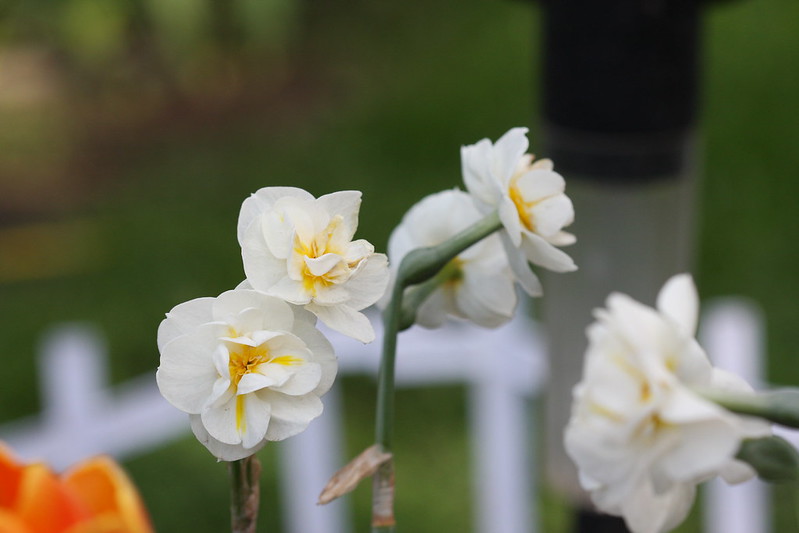
From planning a new border to a complete garden remodel, we pride ourselves on transforming ideas into beautiful reality, with minimum disruption. If you’re based in or around the Reading and Newbury area, we’d love to meet and discuss your project in detail – book your free no-obligation garden consultation today.
Image Credits
Header image; Narcisssus ‘Tete-a-tete’; Narcissus ‘Dutch master’; Narcissus ‘Thalia’